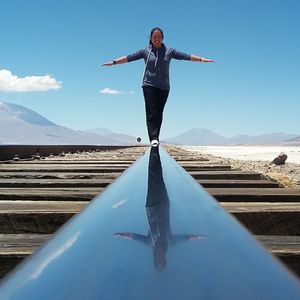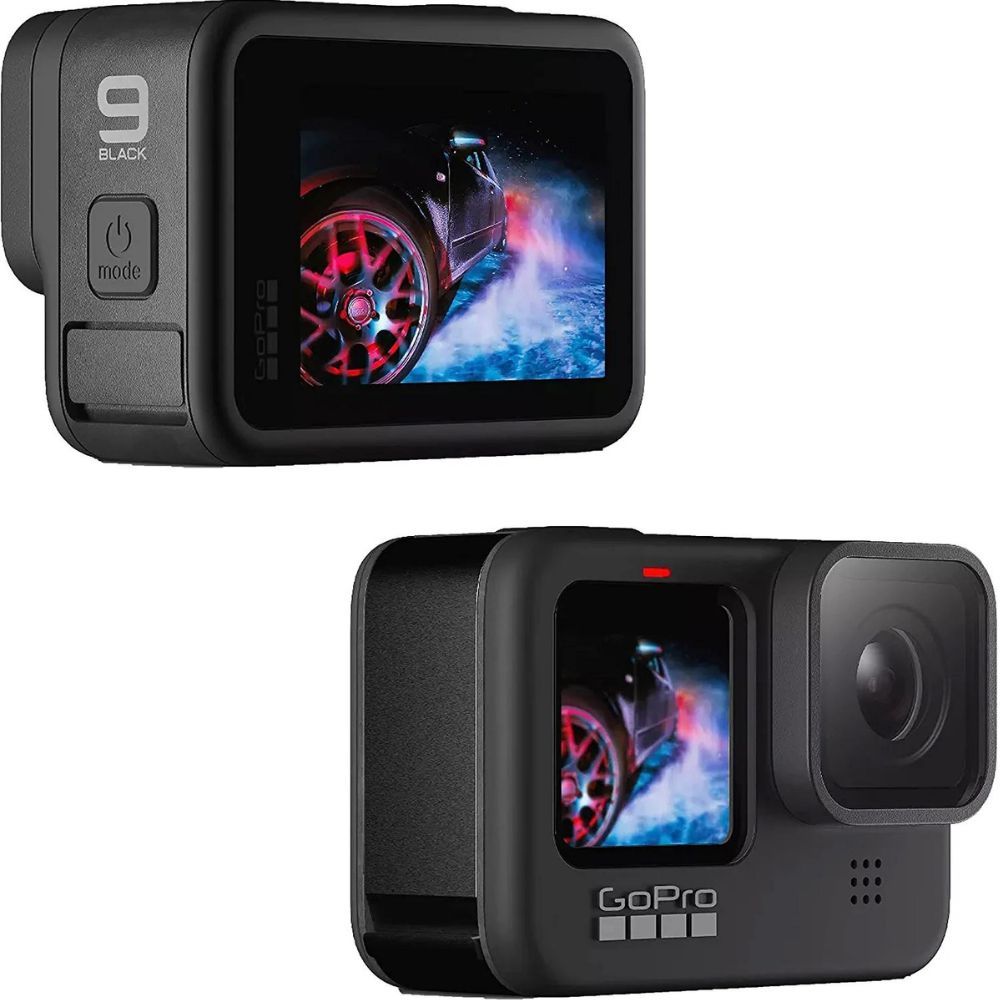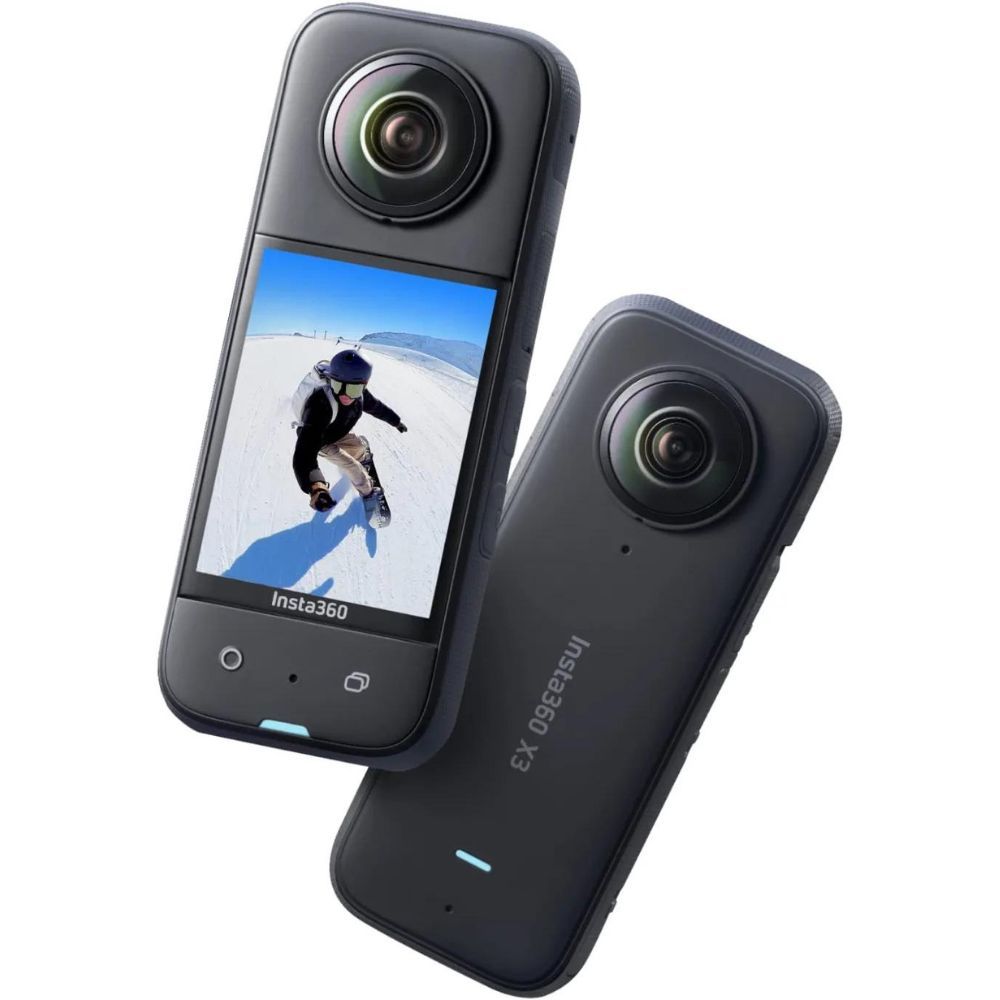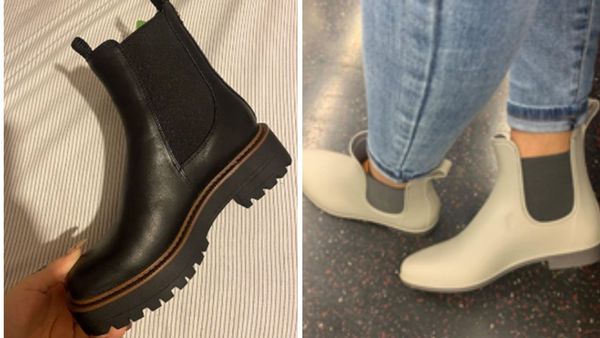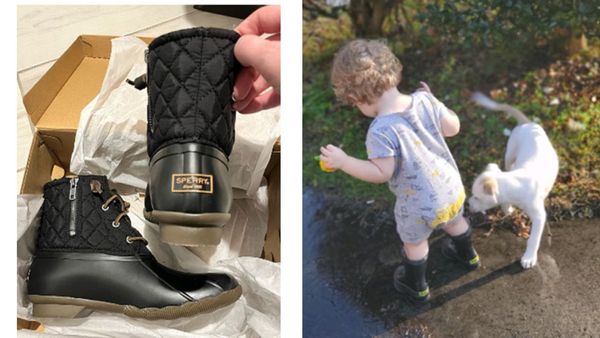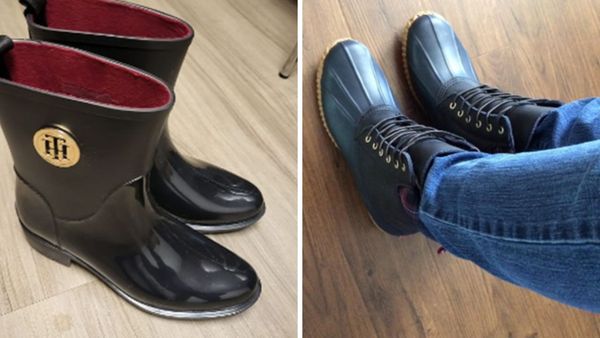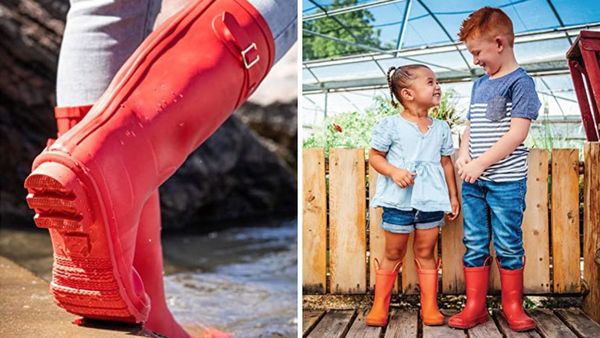Are you looking for the best camera to capture your snowboarding adventures?
You need a camera that can withstand the elements, capture stunning footage, and be easy to use. The best camera for snowboarding is one that is rugged, waterproof, and has a wide-angle lens. It should also have a long battery life and be able to take both photos and videos.
With the right camera, you can capture all the amazing moments of your snowboarding trips in stunning clarity. You'll be able to relive all the thrills and spills of your adventure with crystal-clear photo and video quality that you can share with your friends and family.
How We Choose
You want to capture the perfect snowboarding shot, but don't know which camera is best for the job.
It can be hard to find the right camera for snowboarding because there are so many different brands and models available. How do you know which one will give you the best quality images in the most extreme conditions?
Our team of camera experts has read thousands of reviews on Amazon to find the best camera for snowboarding. We've done all the hard work so that you can easily find and purchase the perfect camera for capturing all your snowboarding (mis)adventures.
We hope you will discover your next great find from the products we’ve listed in this article. As an Amazon affiliate, we do earn commissions from qualifying purchases. However, each of our recommendations is our own and has been chosen with love and care. Enjoy finding your favorite supplies and equipment for your someday to your everyday!

The Greatest Budget Action Camera for Snowboarding
AKASO EK7000 4K30FPS Action Camera Ultra HD
Why It's Great
The AKASO EK7000 4K30FPS Action Camera Ultra HD is the perfect tool for capturing memories in brilliant and detailed 4K Ultra HD video. With professional 4K 30FPS and 2.7K 30FPS video, and 16MP photos at up to 30 frames per second – you’ll be able to record the action like never before. And the best part? You can control it all with a wireless wrist remote control! So leave your hands free while you capture life’s moments without worry; just point, click, and go! Get ready for unbelievably clear footage that you’ll be proud to share. Don't let life's adventure pass by without capturing it with the remarkable AKASO EK7000 4K30FPS Action Camera Ultra HD!
Buyer Considerations
The AKASO EK7000 action camera is the best choice for any outdoors enthusiast. Its long-lasting batteries allow it to film for up to 90 minutes at a time, enabling you to capture every moment of your best skiing, snowboarding, and other winter activities. With its built-in Wi-Fi and HDMI abilities, you can easily transfer videos from your camera to your phone in no time and then share them with family or friends. Furthermore, its waterproof case makes it the perfect companion even in wet or snowy weather. So if you're looking for the best camera for snowboarding or other adventures in nature - look no further than the AKASO EK7000!
Why It's Great
Introducing the GoPro HERO9 – it’s the boost you need to take your videos and photos to a whole new level! Boasting 5K resolution, a 23.6MP sensor, and 20MP photo clarity, it’s no doubt the powerhouse of photography and videography. With SuperPhoto’s advanced image processing algorithms, capturing professional-level content has never been easier. Plus, its incredible HyperSmooth 3.0 stabilization ensures that you don't have terrible camera shake and every single shot is leveled out with buttery smoothness. Make sure to grab yours while they last!
Buyer Considerations
Say goodbye to worrying about your phone battery dying in the cold and say hello to the GoPro HERO9, the best camera for snowboarding. With a larger 1720mAh battery, experience 30% longer battery life than ever before so you can capture all of your best stunts and moments on the mountain without worrying about preserving your power.
Plus, a larger rear touch screen with touch zoom and dazzling front display make it easier than ever to get all of the best angles, so framing and controlling your camera is now simpler than ever. Capture with confidence this winter season with the GoRPo HERO9 – the ultimate tool to capture both memories and moments!

The Greatest Snowboard Action Camera for Long Battery Life
DJI Osmo Action 3 Standard Combo
Why It's Great
Are you an adrenaline junkie in need of a camera that can keep up with your wild and active lifestyle? Look no further than the DJI Osmo Action 3 Standard Combo! With a max battery life of 160 minutes and the ability to record continuously in even frigid temperatures, this action video camera is designed to endure whatever extreme pursuits you have in mind. Plus, the HorizonSteady feature ensures that your footage stays smooth and level no matter what daring rides you try out. Whether it’s skiing, skydiving, or biking over bumpy terrain, shoot incredible action scenes with ease. Because living life on the edge shouldn’t be paired with shaky visuals - get yourself an adventure-ready companion today. Next time, there won’t be any excuses for leaving epic stunts unrecorded!
Buyer Considerations
The best camera for snowboarding just got even better - introducing the 4K HDR Video action camera with dual touchscreens with hydrophobic coating. Not only does it provide users with crystal-clear playback, but you can now vlog, take selfies and adjust parameters with wet hands. You'll never have to worry about rain or snow splashing on your screen again, plus you can easily record videos underwater up to 16 meters without having to purchase any additional accessories - now that's an unbeatable combination of performance and convenience!

The Greatest Waterproof Camera for Snowboarding
Exprotrek 4K Action Camera with Touch Screen, EIS Stabilization, 170 ° Ultra Wide Angle, 40 Meter Waterproof Underwater Camera, Remote Control Sports Camera with Helmet Accessory Set.
Why It's Great
Introducing the Exprotrek 4K Action Camera! Don’t let anything stop you from catching all of life’s greatest and wildest moments. With its ultra-rugged and waterproof design, this bad boy is ready for some serious fun. It has a 40 meter waterproofing capability meaning no adventure is too extreme – diving, swimming, surfing? You name it, this amazing camera can handle it! What’s more, it even comes with lots of free accessories so you can customize your camera to fit whatever indoor and outdoor activity you have in mind. But wait, there’s more! This snowboard camera also has an impressive 4k Ultra HD resolution that takes video at 60 frames per second and stunning 20MP photos at up to 30 frames per second. So not only are you sure to get those priceless and irreplaceable moments being captured, but they’ll be crystal clear upon playback! Why settle for any ordinary camera when Exprotrek can take your memories to the next level? Get yours today and start making real memories with real clarity!
Buyer Considerations
Wouldn't it be great to hit the slopes hassle-free, without ever having to worry about documenting your best snowboarding stunts? Look no further than Exprotrek 4K: with its wireless wrist remote control you can take charge of the camera with a single press of a button, allowing you to capture those impossible tricks in all their glory! Not only that but it also comes with two rechargeable batteries, meaning you won't run out of recording time anytime soon. Plus, built-in WiFi and HDMI make sure you stay connected and share your best moments online without wires. With a maximum focal length measuring 1 millimeter, expect nothing less than perfect textures and detail - plus, it's small enough to carry around without too much bulk or weight. Whether on land or sea, if the best camera for snowboarding is what you want - Exprotrek has got your back!
Why It's Great
Capture life's biggest moments with the groundbreaking Insta360 X3. Get brighter, sharper shots and 8K timelapses with dual 1/2" 48MP sensors. Reframe the action in real time or decide your favorite angle after the fact with AI-powered tools in our app. Best of all, capture an impossible third person view without an ugly selfie stick — the 360 Lens lets you get that drone-like footage without cluttering up your shot. Experience life in Full 360! The Insta360 X3 makes sure you never miss a moment.
Buyer Considerations
If you're looking to take your snowboarding adventures to the next level, look no further than the Insta360 X3 camera. With its revolutionary FlowState Stabilization and 360 Horizon Lock technology, shake-free footage is guaranteed for the best visuals of your best tricks. And with two ultra-high resolution 1/2" 48MP Sensors, you can capture stunning 72MP photos, 8K timelapses and more—even in low light conditions—that you won't be able to get with any other camera for snowboarding on the market. With this one device in hand, you'll also receive a protective pouch, lens cloth, user guide, and charge cable—all in one box! So don't wait any longer—get your Insta360 X3 today and show off your best tricks like never before.
Action Camera Frequently Asked Questions
People want to buy action cameras but they're not sure which one is right for them.
There are a lot of different action cameras on the market and it can be hard to figure out which one is right for you.
We've put together this list of the most frequently asked questions about action cameras so that you can make an informed decision before you buy.
What camera do snowboarders use?
If you’re asking what camera snowboarders use to capture their epic slopeside adventures, the answer is both simple and complex. While there isn’t just one type of camera used by all snowboarders, there are some great options that will help you take those memorable photos and videos on your next wintery excursion.
For starters, an action camera is a great camera must-have for any snowboarding enthusiast who wants to share their hair-raising stunts with friends and family back home (and maybe even thousands of fans online). The most popular option among contemporary riders is the GoPro Max or GoPro HERO line. These small water-resistant devices have a wide range of lenses and features that make them a great choice – they also come in various models so you can select the appropriate resolution level depending on how serious your video editing game is.
You can also opt for larger DSLR cameras if you want more control over the shots you take while riding – these professional-grade devices allow users to adjust shutter speed and aperture settings so they can achieve truly stunning results if they know what they’re doing. However, keep in mind that these bigger cameras require extra protection from moisture due to their sensitive components; luckily, many specially designed cases are available nowadays with extra lids or seals which will keep them safe from nature´s elements as well as accidental drops during big jumps or falls.
At last but not least, smartphone photography has become very popular thanks to new tech developments such as optical and electronic image stabilization software combined with powerful front/back lenses when it comes taking pictures or recording videos outdoors - particularly in cold climates such as those found near snowy slopes! Many phones provide excellent battery life too which outlasts traditional action cams like GoPros – this makes them an attractive option for those who want to save energy resources while capturing moments during a long day at the mountain resort or park pipeline session.
In conclusion: Snowboarders have quite a few diverse options when choosing a camera perfect for storing memories of their greatest feats. Whether going with sophisticated DSLRs like Canon EOS 70D or opting out on something simpler but no less functional like Samsung Galaxy S10+, choose whatever helps make your dreams come true without sacrificing quality!
How do you film yourself snowboarding?
If you're ready to take your snowboarding game to the next level, then you are in for a treat! Even if you've never filmed yourself before, this is actually quite an easy process. All you need is some basic gear and an adventurous spirit - let's get started!
First, make sure that you have a video recorder or camera that fits securely on yourself while snowboarding. Some options include GoPro cameras or even products like the TorsoBelt - both of which can be attached conveniently around the chest area (or at the gut) and should stay there throughout your stunts. If using a GoPro camera, it's important to make sure that it has enough battery life and memory storage capacity for what will likely be hours of footage. Don't forget to bring extra batteries too!
Once all necessary equipment is secured onto your body (a variety of camera mounts are available to facilitate this), begin by filming yourself as if it was just another day riding down mountains and slopes. Make sure to capture some more extreme close-ups as well so that when editing, later on, you can add special effects such as slow-motion shots or crazy angle changes (you'll thank me later). At times like these, I suggest having someone tumble with unique perspectives for capturing those epic moments - this could be anything from aerial shots over jumps to first-person point-of-view angles going through tight turns on hillsides.
The final step in this process would be post-production work where all of your clips get assembled together into one awesome ski/snowboard movie with music overlaid and all sorts of creativity injected into it along with possible narrative commentary pieces dotted between scenes etc.. Make sure not only are cool effects added but also edit out any unwanted sections where movements were sketchy due to bad lighting conditions or similar issues during recording sessions. With practice comes perfection!
By following these steps carefully whilst remembering the importance of awareness towards the surrounding environment when attempting risky moves plus a bit of luck thrown in between here & there – I’m certain your snowboarding film will soon become viral across multiple social media networks & entertainment platforms online alike; making everyone envious amongst friends who couldn’t join in on this action-packed adventure with yourself.
How do you take pictures while snowboarding?
Taking pictures while snowboarding is one of the best ways to capture memories while shredding the slopes! But it can be tricky since you're moving quickly and that can make taking a good picture challenging. So, here's what you should do for a successful photo op:
1. Invest in high-quality, tough cameras: They don't have to be anything fancy or expensive - just something with slow-motion capabilities so that they will take multiple shots instead of just one (which could be blurry).
2. Pre-plan your shot: Since there won't be much time to get creative once you're in motion, know what kind of angle or perspective you want before you leave the top of the hill.
3. Get close to your subject: To avoid background blur and motion trails, don't position yourself too far away from your subject when shooting!
4. Increase shutter speed and lower ISO settings: This will help reduce noise and keep your photographs extra sharp even if they’re taken at higher speeds.
5. Use skating techniques when pointing the camera while riding: Instead of panning across scenes like traditional photography techniques dictate, use skating movements such as Ollie/Nollie (shifting backside weight) or edge flips (pulling up on edges)." This way, not only are you getting different angles than usual but also allowing yourself more control over where the lens is pointed - which reduces blurred images due to shaky hands during descents!
Finally, if all else fails – practice makes perfect! Don’t forget that taking amazing photos takes time and patience but having fun with it makes all those hours worthwhile.
Which is better GoPro or Insta360?
The answer depends on your individual needs and preferences. If you're looking for the highest quality video resolution, GoPro is a great choice as it offers the latest 8K technology, while the Insta360 only offers up to 6K. However, if you are looking for convenience and affordability, then Insta360 is definitely worth considering. With its one-click or voice control shooting capabilities and its easy-to-use 360° shooter mode, Insta360 makes capturing life's memories quick and effortless.
On top of that, when it comes to streaming live videos from your device’s camera to social media platforms such as Facebook Live or YouTube Live, both GoPro andInsta360 offer similar features with their respective apps allowing for seamless transitions between different media outlets to deliver real-time action wherever you go.
When comparing image stabilization technologies between these two brands, however; GoPro HyperSmooth compared to InstaFlow Technology – it is clear that InstaFlowtakes the lead in this category. The FlowState stabilization feature offers incredibly smooth images without visible jerks or blurs even when walking with cameras mounted on your body or equipment during strenuous activities like skating/surfing etc., so if this is something important to you - going with the Insta360 should be a no brainer!
What are the best GoPro settings for snowboarding?
Snowboarding is an incredibly fun and popular winter sport, and with a few tips in the right direction, you can definitely capture those epic moments with your GoPro!
First off, when you go snowboarding it’s important to make sure that your GoPro is set up correctly. This means making sure the frame rate, resolution, field of view (FOV), white balance, and photo/video mode you’re using are all optimized for the situation.
For snowboarding, accuracy comes first. If a moment isn't captured accurately then there's no point in having footage at all. That said when it comes to the frame rate you may want something higher than the usual 24fps or 30fps so that any action shots look smooth and clear. The best frame rates for snowboarding would lean more towards 50-60 fps depending on how fast or intense your runs are going to be as this will help create a smoother feel when viewing later on. You also may want to consider bumping up the resolution from 1080p HD to 2k or 4k UHD which helps these higher framerates stay smooth while still having detailed images. This further improves accuracy so you're not missing any small details while recording video!
When it comes to FOV (field of view), wider views work better since they give viewers more information about where certain tricks were taking place compared to tighter shots like medium or narrow modes. For example, if you're shooting a backside 180 spin, wide view will help show both take off & landing points instead of just one specific angle due to its wide coverage area.
For white balance, this tends not to vary much between different outdoor environments but rather from personal preference as everyone has their own taste in color grading & editing style. The simplest function is to use Auto WB, which should suffice unless needed otherwise based upon light source & conditions present during use case scenarios (ex: cloudy days = lower degrees of Kelvin vs sunny afternoons = higher levels). Lastly don't forget about Photo Mode & Video Mode options. Simply pick whatever works best for the situation being recorded at the time of!
On top of these settings be sure to utilize features such as Time Lapse Mode (+ Burst Rate Settings), Slow Motion Functions (+ Exposure Blending Options), Protune Modes (+ Color Grading Abilities), and Highlight Tagging. Altogether utilizing a variety of the functions mentioned above should help get the most out of your camera setups during recordings no matter the skill level being showcased thus capturing amazing moments even easier now than ever before. Also, riders now have the ability to store impressive footage longer, thanks to auto backup capabilities. So don't worry too much about settings; try experimenting with different variations to see what works.
Do professionals use Gopros?
Absolutely! Gopros have revolutionized the field of professional photography and videography, allowing professionals to capture amazing footage in extreme or difficult locations. Not only do pros use Gopros to shoot amazing videos; they also employ them for a variety of other uses such as creating timelapse shots, capturing slow motion video, and utilizing their wide range of accessories. In fact, there are many photographers and filmmakers who use Gopros exclusively for their projects! Some notable examples include renowned photographer Ben Moon who used a GoPro for his stunning series ‘Deep Sea’ and professional skier James Heim who captured incredible skiing actions shots with his GoPro on steep mountain tops. The possibilities are truly endless with these little gadgets – if you can dream it up you can capture it with a GoPro.
Does a GoPro work in extreme cold?
You bet! GoPros are incredibly durable and can stand up to extreme conditions. In fact, the GoPro Hero 8 is rated for temperatures as low as -10°C (14°F), so you don't have to worry about it freezing in cold weather.
The best part? The camera's tiny size makes it ideal for capturing footage in extreme temperatures – which means there's no need to lug around a bulky tripod or extra equipment when shooting outdoors. Not only that but with its waterproof shell and rugged design, you can safely operate your GoPro even in wet or snowy environments.
Surprisingly enough, the camera actually performs better in colder climates than warmer ones! Since cooler air holds less moisture than warm air, it causes less lens fogging and image distortion during shoots — making your video come out looking crisp and clear (even if Mother Nature isn't).
Plus, thanks to GoPro's various mounting accessories like suction cups and chest straps you’ll be able to capture amazing shots without having to worry about dropping your high-tech equipment on treacherous terrain. So fret not – your beloved GoPro is ready for any adventure – no matter how cold!
How do I keep my GoPro warm in cold weather?
Keeping your precious GoPro warm in cold weather doesn't have to be a difficult task. With a little bit of know-how and some clever tools, you can make sure your camera is always ready for action no matter the temperatures outside!
First and foremost, you'll want to make sure that any metal parts on your camera are well covered up. This includes the lens ports, memory card slots, and other quick-release pieces. A thin layer of insulation around these areas will help keep the heat from escaping out through these small crevices. You could use something as simple as electrical tape or even bubble wrap-- just make sure it's not so tight that it affects how your camera functions or gets stuck permanently!
Next up is protecting the body itself against chilly winds and air currents. A protective housing made specifically for a GoPro can do wonders at keeping things warm inside while still allowing easy access to all buttons and controls. Even if you don't already own one (which I highly recommend!), there are plenty of third-party options available that work just as well at an affordable price point.
Last but certainly not least: battery power! Keeping spare batteries fully charged before heading out into cold conditions ensures maximum shoot time without having to worry about losing warmth due to dead cells mid-shoot. It's also recommended to bring along supplemental heating packs specifically designed for powering/charging cameras. These unique pockets provide regulated temperatures of precisely 104°F with enough juice left over to keep shooting even in extreme conditions - truly invaluable when capturing memories amidst snowscapes or mountainous adventures!
Can cold weather damage a camera?
Yes, cold weather can be very detrimental to your camera! In short, temperatures that are too low can damage the image sensor and battery of your camera.
When it's really cold outside (-20°C/ -4°F and below), the oil in certain parts of the camera like its shutter mechanism tends to get much thicker. This makes it difficult for these components to move smoothly and may cause them to malfunction or even break! Additionally, the battery experiences significant energy loss during this time due to reduced chemical activity so batteries tend to die faster.
In terms of imaging sensors, exposure times lengthen as the temperature drops leading to an increase in digital noise with longer exposures becoming more susceptible than shorter ones. If a lens is exposed from a solid state device (e.g., CMOS) then there will also be a greater risk of dust contamination since cooler air favors particles sticking around for longer periods of time on glass surfaces. Last but not least, prolonged exposure to extremely cold temperatures may lead to permanent damage that cannot be recovered by simply raising the temperature again — if any signs appear such as spots on photographs or strange noises coming out from within the body then it’s best not take any further shots until you heat up the system enough first!
Can you use a GoPro in the snow?
Absolutely! Using a GoPro in the snow is easy and can create incredible footage. Whether you’re skiing down a mountain, ice skating on a frozen pond, or building a snowman, capturing moments with your GoPro will help make the experience even more special.
First things first, if you plan to take your camera out into winter temperatures, remember to keep extra batteries handy and make sure they are charged. Cold weather drains battery life at an astounding rate! You may also want to purchase protective covers for the ports of your GoPro so that icy cold air does not enter your camera mid-shot.
Now let’s get technical! When shooting during snowy weather conditions it is essential that you adjust the exposure setting on your camera appropriately. If left on auto settings many times whites will come off as grey due to blowing flakes being overexposed across discolored landscapes or scenes with stark contrasts between dark shadows and bright highlights of white snow caps upon mountainsides thrown off balance by bright sunlight from above - this is where manual exposure control becomes essential (at least +1 stop). For example, pay attention to how much light actually reaches beneath layers of clothing and such; this is important when shooting in these types of landscapes as people sometimes become silhouettes without any real facial features recognizable due to blocked light sources altogether - again manual exposure helps here too!
It's also important to ensure that picture quality stays sharp throughout extreme windy conditions which can often be encountered whilst photographing outdoor scenes filled with flying ice crystals within snowy surroundings; using an anti-flicker mode and keeping shutter speed within acceptable ranges should remedy this issue fairly easily unless means of additional precautions must be taken like increasing ISO levels. On top of all that changing up angles while capturing footage (such as super wide shots from below instead of up above) can add interesting perspectives when mixing together shots from different perspectives no matter what type of environment one might find themselves in! From all these tips combined hopefully, you'll have yourself some amazing memories captured for years ahead with minimal hassle or fuss - happy filming everyone!
How cold is too cold for electronics?
When it comes to electronics and cold temperatures, you can definitely have too cold of a situation. The rule of thumb is that any temperature below 0°C/32°F may cause problems for your electronics. Generally, anything above -20°C/-4°F should be fine if the device isn't affected by humidity or condensation.
From a hardware perspective, colder temperatures aren't ideal when it comes to electronics because they decrease the operating speed of components such as CPUs and RAM. They can also affect the communication between integrated circuits due to slower signals on certain pathways, as well as decreased reliability in transistors which can lead to permanent damage or failure over time. In terms of software and media files stored on devices such as hard drives or flash memory cards, low temperatures are not recommended either since they can cause data corruption due to increased resistance in electrical contacts and pins that hinder their ability to communicate with the rest of the system accurately.
So while extreme cold weather won't immediately destroy your favorite gadgets (at least ones made after about 2014), prolonged exposure will certainly take its toll eventually - so it's best to keep them safe from abrupt temperature changes when possible!
How long will a GoPro battery last in the cold?
Ah, the age-old question of how long a GoPro battery will last in the cold! This is an important one to get right because, as we all know, when you’re trying to capture those stunning winter shots nothing should be left to chance. It’s no secret that cold temperatures can drastically reduce battery life even in the best of cases.
It turns out there are several factors that play into this answer: the temperature outside and what activity you're doing with your camera. If it's just sitting off for a bit then it's okay since modern batteries hold up well at cooler temperatures than they used to. However, if you are actively using your camera (for recording or taking pictures) then it puts more stress on your battery and usually reduces its life significantly.
On average most GoPro batteries last between 1-2 hours if they’re exposed to extreme cold conditions (under -20°C). That may not sound like much but it can be enough time for some great footage if planned properly! Plus modern lithium-ion batteries still perform well down to 0°C so there are still some benefits to shooting in colder weather. Just make sure you always have extra fully charged batteries on hand in case things start getting too chilly!
The best camera for snowboarding? Here is our recommendation.
So, what’s the best camera for skiing and snowboarding? We hope our review has helped you find the perfect fit for your needs. Be sure to get yours today by clicking the check price button on your favorite option. Thanks for reading and we can’t wait to see all your amazing alpine photos!

